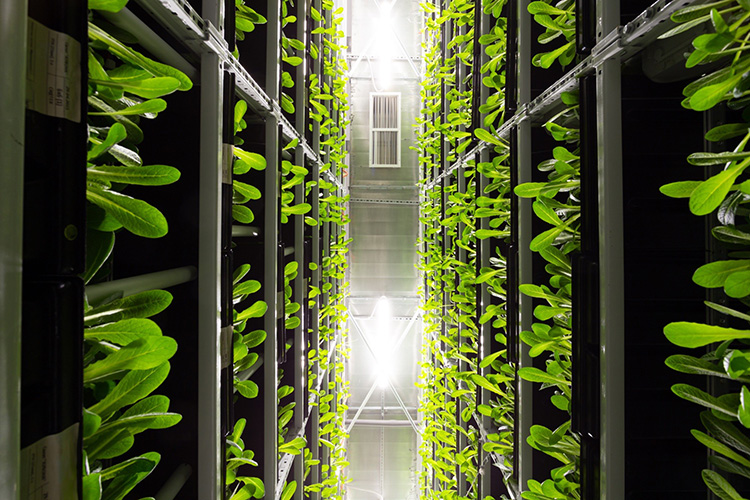Report on Plant Stem Cell Research and its Implications for Sustainable Development Goals
Introduction: Addressing Global Challenges through Agricultural Innovation
Recent advancements in plant biology offer significant potential for addressing global challenges related to food security, sustainable energy, and responsible production. Research into plant stem cells, the fundamental building blocks of plant growth, is critical for achieving key Sustainable Development Goals (SDGs). A new study provides foundational knowledge that directly supports these global objectives.
- SDG 2 (Zero Hunger): Understanding stem cell regulation is paramount to enhancing crop productivity and resilience, forming the basis for a secure global food supply.
- SDG 7 (Affordable and Clean Energy): Optimizing plant growth through genetic insight can improve the efficiency of biofuel feedstocks like maize.
- SDG 12 (Responsible Consumption and Production): Developing more productive crops contributes to more efficient land use and sustainable agricultural systems.
Research Methodology and Key Findings
Biologists at Cold Spring Harbor Laboratory (CSHL) conducted a pioneering analysis of maize and Arabidopsis stem cells using single-cell RNA sequencing. This innovative method allowed for an unprecedented view of gene expression at the cellular level, overcoming limitations of previous research.
- High-Resolution Mapping: For the first time, researchers successfully mapped the expression of two known stem cell regulators, CLAVATA3 and WUSCHEL, across thousands of individual shoot cells.
- Discovery of New Regulators: The study identified hundreds of new genes preferentially expressed in stem cells of both maize and Arabidopsis, indicating their evolutionary importance across plant species.
- Link to Crop Productivity: A direct connection was established between certain newly identified stem cell regulators and size variations in maize, providing a genetic target for improving crop yield. This finding is a crucial step toward achieving SDG 2 by enabling the breeding of more productive crops.
- Creation of a Genetic Atlas: The research produced a comprehensive, publicly available atlas of gene expression. This resource serves as a critical tool for the global scientific community, accelerating innovation in line with SDG 9 (Industry, Innovation, and Infrastructure).
Direct Contributions to Sustainable Development Goals
The outcomes of this research provide a direct pathway for advancing several SDGs through targeted agricultural development.
- SDG 2 (Zero Hunger): The identification of genes controlling productivity provides breeders with the tools to develop higher-yielding and more resilient crop varieties. This directly supports Target 2.4, which calls for sustainable and resilient agricultural practices to end hunger.
- SDG 9 (Industry, Innovation, and Infrastructure): The application of advanced single-cell RNA sequencing in plant science represents a significant technological innovation. The resulting open-access data promotes collaborative research and accelerates progress in agricultural biotechnology.
- SDG 15 (Life on Land): By elucidating the genetic mechanisms of plant growth, this work can help develop crops better adapted to diverse and changing environmental conditions, contributing to the resilience of terrestrial ecosystems and sustainable agriculture.
Conclusion and Future Outlook
This foundational research provides a detailed genetic roadmap of plant stem cells that will guide agricultural science for the next decade. By enabling a deeper understanding of how to regulate plant growth, the findings empower breeders, physiologists, and developmental biologists to create crops that are more productive and resilient. This work is a critical contribution to achieving a sustainable future, with direct and measurable impacts on the goals of ensuring food security, promoting sustainable industry, and protecting life on land.
Analysis of the Article in Relation to Sustainable Development Goals
1. Which SDGs are addressed or connected to the issues highlighted in the article?
-
SDG 2: Zero Hunger
The article directly addresses food security by focusing on research aimed at improving the world’s food supply. It discusses how understanding plant stem cells can lead to breeding more productive and resilient crops, which is fundamental to ending hunger and ensuring sustainable agriculture.
-
SDG 7: Affordable and Clean Energy
The text explicitly mentions that plant stem cells are crucial for “fuel production.” This connects the research to the development of biofuels, a form of renewable energy, which is a key component of SDG 7.
-
SDG 9: Industry, Innovation, and Infrastructure
The core of the article is about scientific research and technological innovation. It highlights a new method (“single-cell RNA sequencing”) and the creation of “foundational knowledge that could guide research for the next decade.” This directly supports the goal of enhancing scientific research and fostering innovation.
-
SDG 15: Life on Land
The research contributes to understanding “plant diversity” at a fundamental genetic level. By identifying key genes that are “evolutionarily important across many plant species,” the work supports the conservation and sustainable use of terrestrial ecosystems and their biodiversity, particularly plant genetic resources.
2. What specific targets under those SDGs can be identified based on the article’s content?
-
Target 2.4: By 2030, ensure sustainable food production systems and implement resilient agricultural practices that increase productivity and production.
- The article’s goal of “breeding new crops that are more resilient or more productive” directly aligns with this target. The research aims to provide the foundational knowledge needed to develop crops that can withstand environmental stress and produce higher yields.
-
Target 2.5: By 2020, maintain the genetic diversity of seeds, cultivated plants and their related wild species… and promote access to and fair and equitable sharing of benefits arising from the utilization of genetic resources.
- The research involves mapping stem cell regulators and creating an “atlas of gene expression.” The article states, “When we publish that, the whole community can use it,” which directly supports the principles of maintaining and sharing knowledge about genetic resources.
-
Target 7.2: By 2030, increase substantially the share of renewable energy in the global energy mix.
- The mention of “fuel production” links the research to biofuels. Improving the productivity of crops used for fuel would help increase the share of this renewable energy source.
-
Target 9.5: Enhance scientific research, upgrade the technological capabilities of industrial sectors in all countries… encouraging innovation.
- The entire article is a case study for this target. It describes a novel application of “single-cell RNA sequencing” to plant biology, which represents an enhancement of scientific research and technological capability. The goal is to create “foundational knowledge” to spur further innovation by developmental biologists, physiologists, and breeders.
3. Are there any indicators mentioned or implied in the article that can be used to measure progress towards the identified targets?
- Implied Indicator for Target 2.4 (Productivity and Resilience): The article links certain stem cell regulators to “size variations in maize” and overall “productivity.” Therefore, an implied indicator is the yield of new crop varieties developed using this genetic knowledge. The development of more resilient strains would be another measurable outcome.
- Implied Indicator for Target 2.5 (Genetic Diversity): The creation and publication of the “atlas of gene expression” is a direct output. Progress can be measured by the number of plant genetic resources (in this case, genes and regulatory pathways) characterized and made publicly available in databases for research and breeding.
- Implied Indicator for Target 9.5 (Research and Innovation): The development and application of the described method itself is an indicator of innovation. Progress can be measured by the number of scientific publications and research projects that utilize the new data and methods presented in the article. The statement that “the whole community can use it” implies that its uptake and use are key measures of success.
4. Table of SDGs, Targets, and Indicators
| SDGs | Targets | Indicators (Identified or Implied in the Article) |
|---|---|---|
| SDG 2: Zero Hunger |
Target 2.4: Ensure sustainable food production systems and implement resilient agricultural practices.
Target 2.5: Maintain genetic diversity of seeds and cultivated plants and promote access to genetic resources. |
– Increased crop productivity and yield (e.g., “size variations in maize”). – Development of new, more resilient crop varieties. – Number of genes/regulators identified and characterized. |
| SDG 7: Affordable and Clean Energy | Target 7.2: Increase the share of renewable energy. | – Increased efficiency and yield of crops used for “fuel production” (biofuels). |
| SDG 9: Industry, Innovation, and Infrastructure | Target 9.5: Enhance scientific research and encourage innovation. |
– Development and application of new scientific methods (“single-cell RNA sequencing” in plants). – Publication of “foundational knowledge” to guide future research. – Community-wide use of the published data by other researchers. |
| SDG 15: Life on Land | Target 15.6 (related): Promote fair and equitable sharing of the benefits arising from the utilization of genetic resources. | – Public dissemination of research findings on plant genetic diversity (“the whole community can use it”). |
Source: sciencedaily.com







